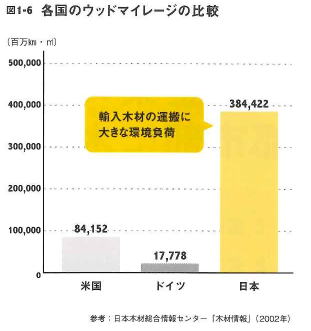
 |
| "Urban Wood Use in Business" and Wood Mileages(2016/1/16) | |
|
|
|
|
When we put our focus on large scale construction not only detached houses for wood use option, it is important to consider how the corporate sector uses wood for office, factory and store as well as the product development in their business, working together with the public sector which is the main player of building public constructions. In such timing, a book titled as this article, "Urban Wood Use in Business(tentative English title)" was published from Nikkei BP.
With a lot of photograph of nearly 50 examples of actual wood uses in offices, stores and community facilities are introduced in this attractive practical guidebook. It is clearly make sense and logical that municipalities promote their own harvest wood, but it intrigues that how about the private sector that eyes the global market will work on this challenge. It is a bit lengthy but I would like to extract some part from the book as follow; ■Use of domestic wood is advantage on environment assessment for constructionsIt hasn't yet recognized widely, but the use of domestic Harvested Wood Products (HWP) can be counted as the carbon credit as "carbon fixation" under the UNFCCC system. It was newly agreed at COP 17 in 2011, Durban, South Africa. Before that, carbon storage in the harvested wood was considered to "emit" at the point of harvested and extracted from the forest. It is now recognized as advantage to use the domestic wood in the global climate change framework.  Use of domestic wood has also another advantage that has less environmental burden in the consumption of energy in transportation. Currently Japanese wood self-supply rate is about 30% only and still relying on the imported. However, these imported wood emit enormous amount of CO2 by consuming fossil fuel used for ship. Wood mileage is the indicator to make it quantitative. It is calculated from amount and distance of wood transportation. The bigger importer has the higher mileage and the smaller importer has the lower mileage. Wood Mileage of Japan is much higher than other developed countries such as the US, as it imports more than them and giving more burdens on environment (Figure 1.6). Use of domestic wood has also another advantage that has less environmental burden in the consumption of energy in transportation. Currently Japanese wood self-supply rate is about 30% only and still relying on the imported. However, these imported wood emit enormous amount of CO2 by consuming fossil fuel used for ship. Wood mileage is the indicator to make it quantitative. It is calculated from amount and distance of wood transportation. The bigger importer has the higher mileage and the smaller importer has the lower mileage. Wood Mileage of Japan is much higher than other developed countries such as the US, as it imports more than them and giving more burdens on environment (Figure 1.6).In foreign countries, when the constructions environmental assessment is conducted, usage of the local resources is counted as positive. Hence, the clients, owner or even the designer positively choose the domestic local wood for their construction. Japan also should encourage such initiatives. ==Unquote. I'm interested in how wood mileages will exercise its potential in the new momentum of wood use in private sector. |
|
like btn

|